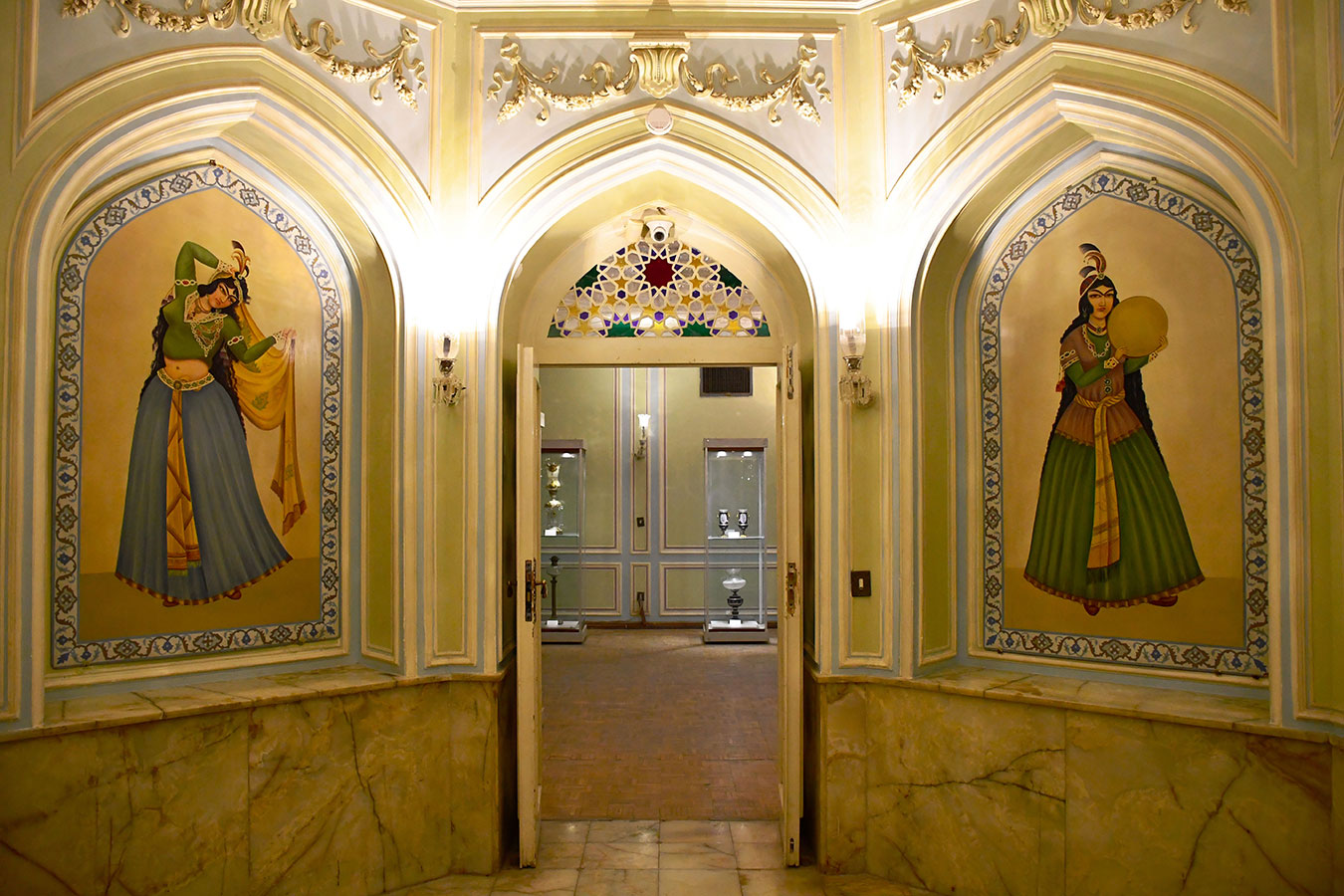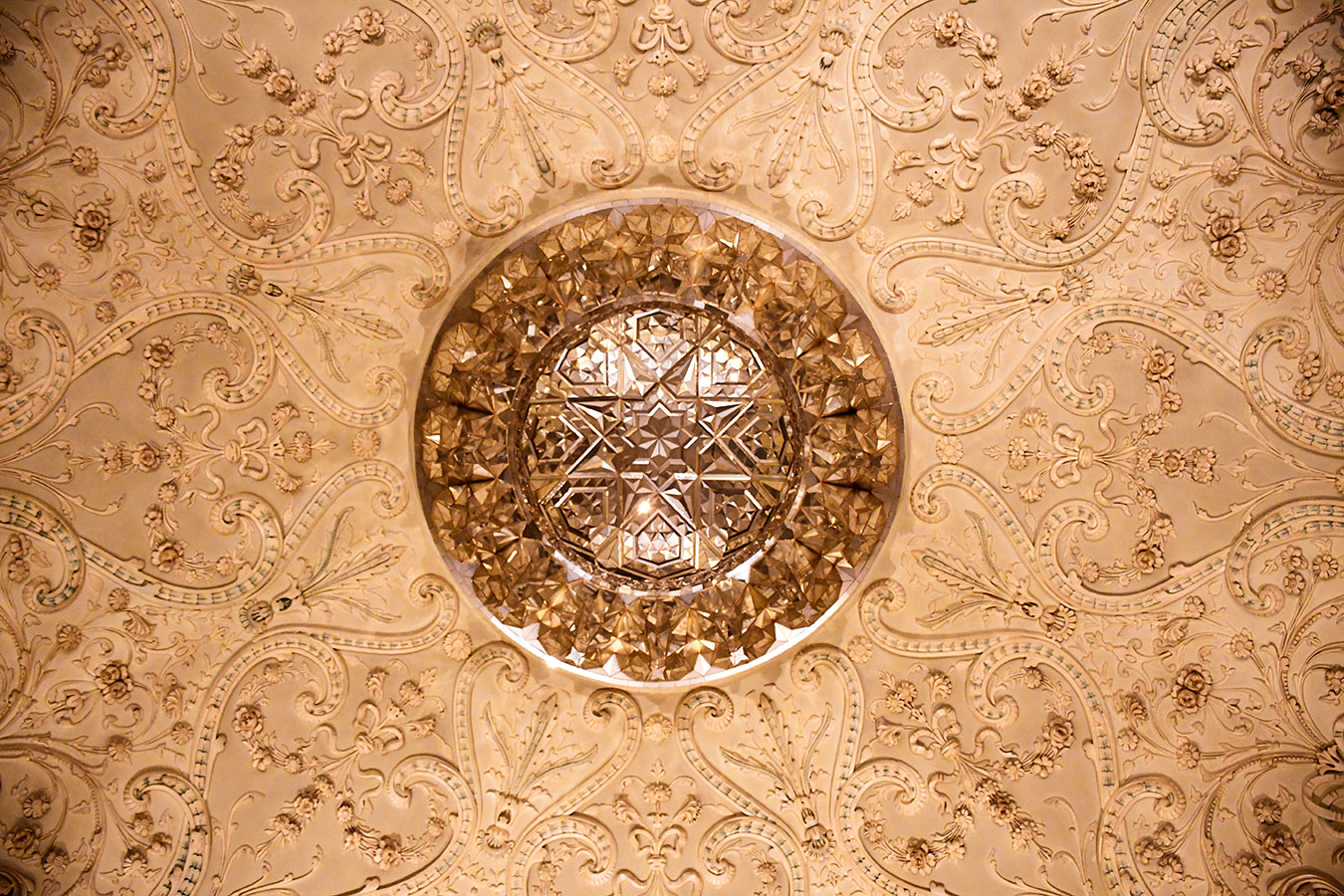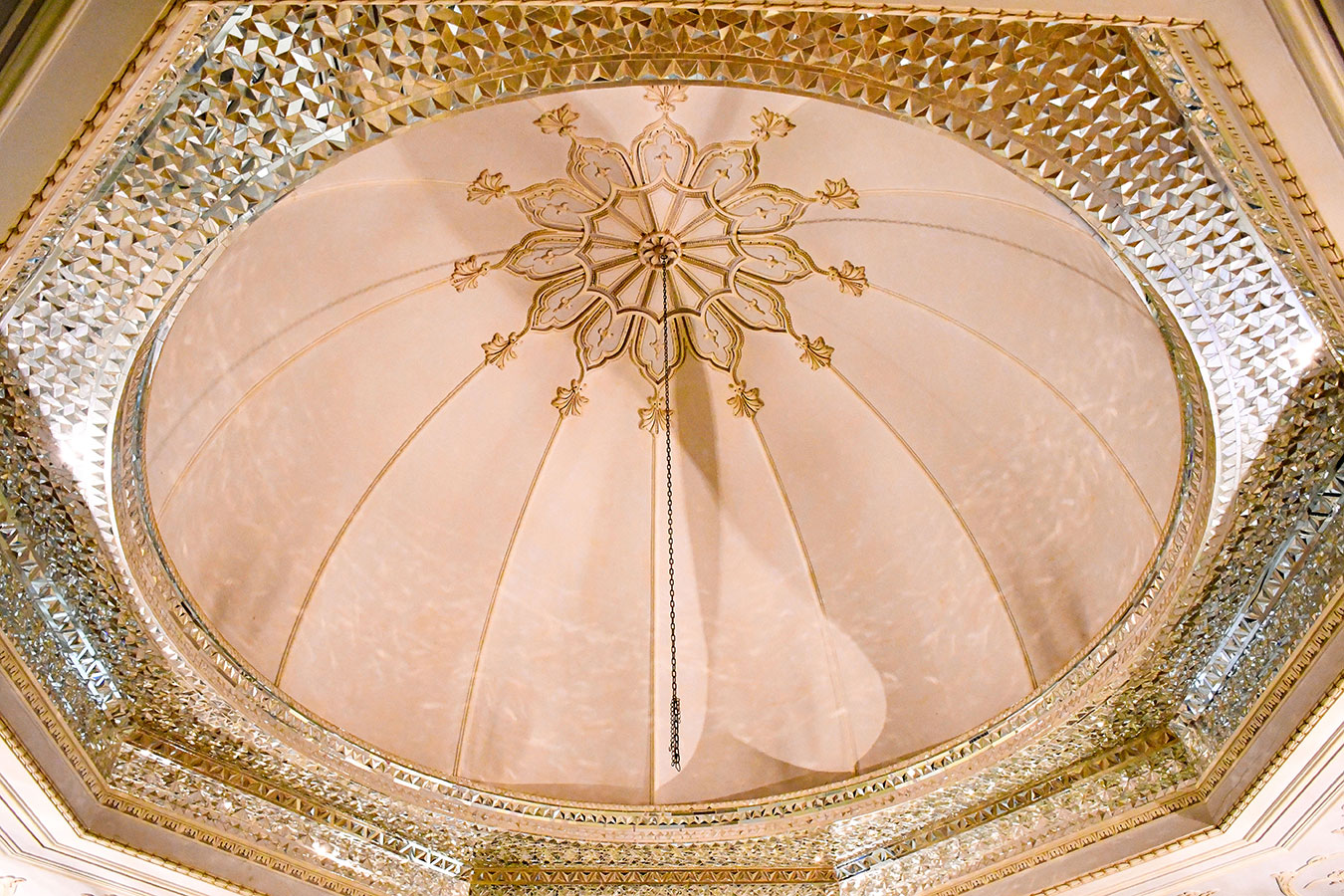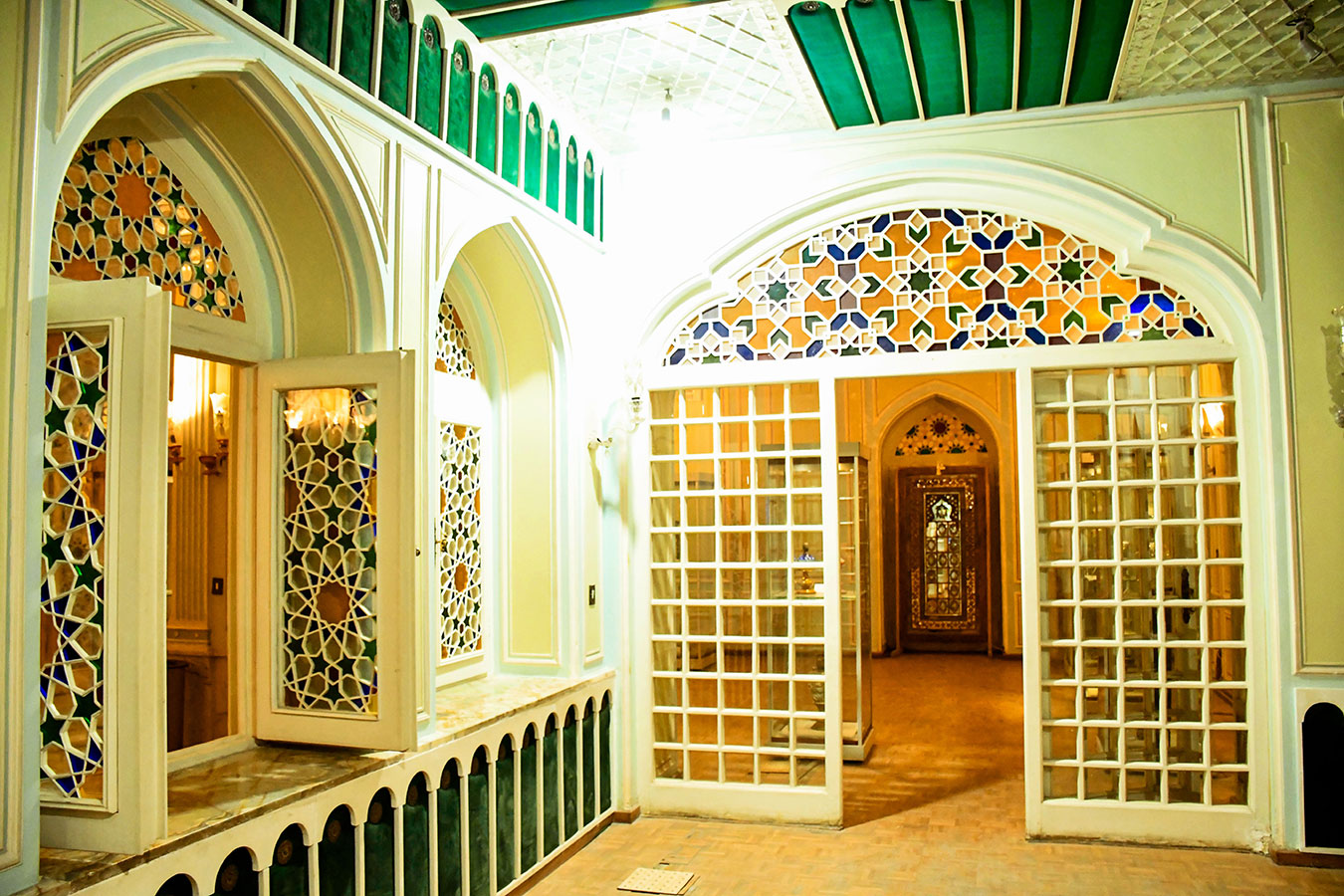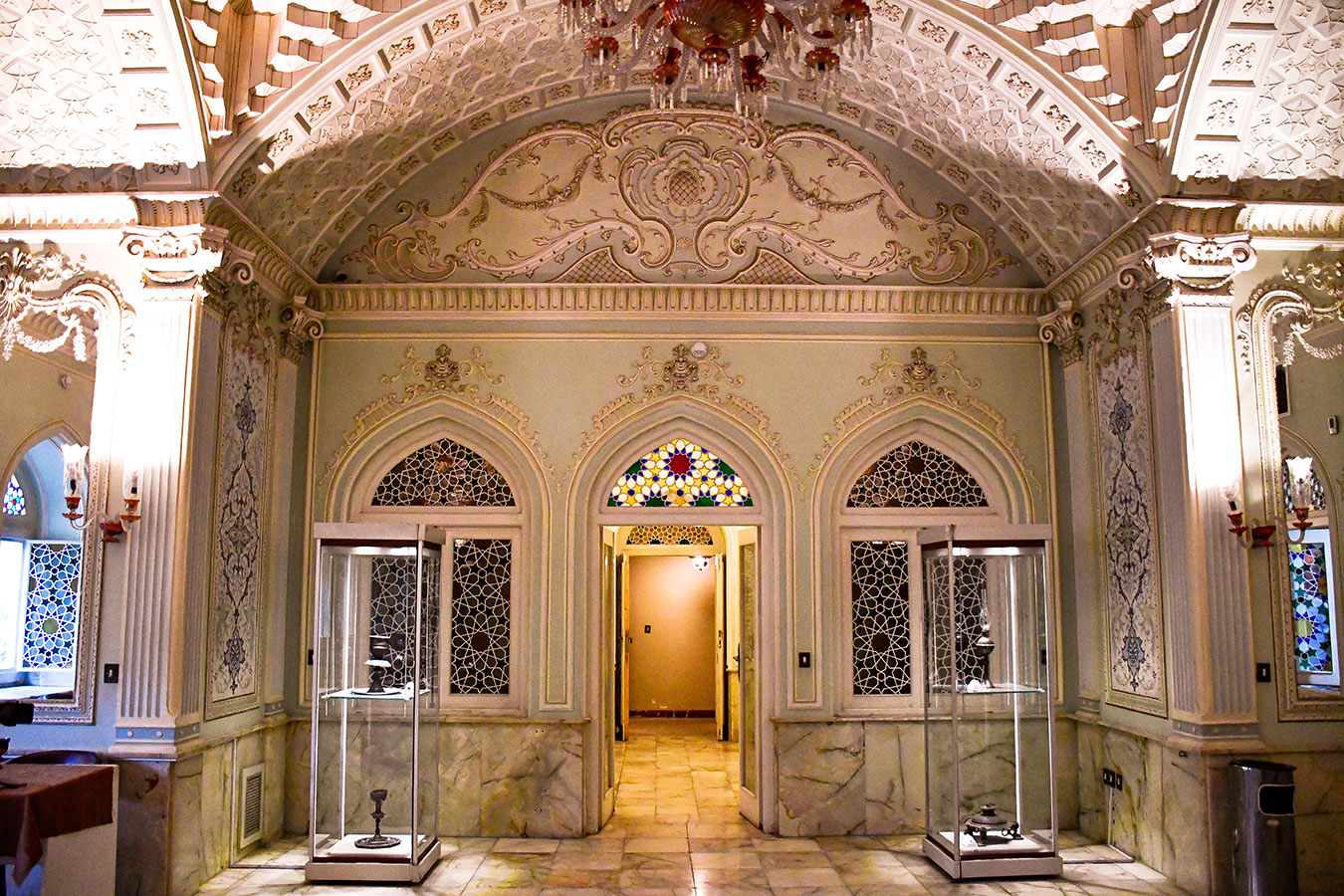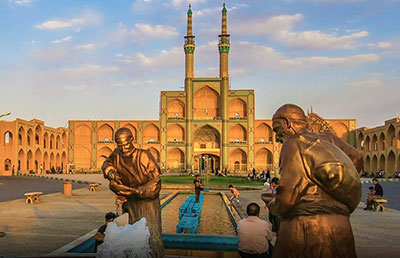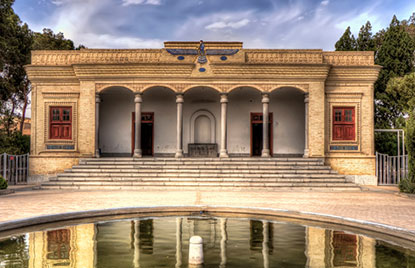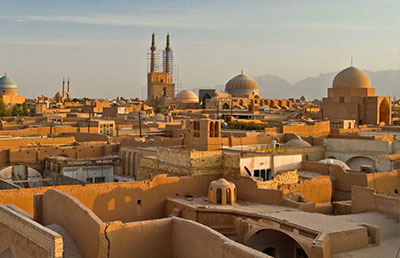Mirror Palace mansion
Cultural museums are one of the attractions of cities, because visiting them in the least amount of time introduces us the culture, traditions, and the life style of the residents of a region in a special period. Museums are the best place to keep the heritage of the past and an authentic source for awareness. The recent statistics reveal the activities of 20 museums in Yazd that Qasr-e-Ayeneh (mirror palace) museum which is remained from Pahlavi era and the personal residence of Reza Sarrafzadeh Yazdi is one of the most appealing ones. This building, with the registration number 2400, was registered in the list of national heritage. Fortunately at the present time, this museum has been adapted and the conditions have been provided for blind people to visit this place.
Mirror palace mansion (mirror and lighting museum)
In the middle of a beautiful and wide garden, Reza Sarafzadeh Yazdi ordered to construct mirror palace mansion with an area of 837 m2 in order to receive his private guests, and on the basis of what has been heard, to use it as his office which was belonged to the South factory in 1941. This immersive structure with a combination of Iranian and European architectural style which is fantastically decorated with small pieces of mirror, stucco and painting, was later used as his residence. It is said that Mr Sarafzadeh attempted to use this beautiful building as a motivation for his son to come back to Iran. But he never returned. After the revolution, Mirror palace was turned into Mostazafan Foundation and since 1377 SH (1998 AD), it has been used as a government museum to display the art works of Yazdi artists.
Who was Reza Sarafzadeh Yazdi?
Reza Sarafzadeh Yazdi, the son of Haj Ali Sarafzadeh Yazdi, was born in 1899 in Yazd. He was one of the well- known merchants of this city and the founder of South Nasaji (textile) Factories, and also a politician and the representative of the people of Yazd in National Assembly. He was prominent for his fairness so that he showed tolerance to debtors at the time of failure. Moreover, he was pioneer in doing charity works and helping needy people. Jabra or Toua is one of the old and vast gardens in Yazd which is in the authority of the government as a park for people.
Personal life of Mr Sarafzadeh Yazdi
In addition to learning religious science and education, he also began studying business activities and the experience of working in the money-changer hall of his father made him do the business independently. When Sarafzadeh was elected to be the representative of people in national assembly, he also established a firm in Tehran and due to his credibility, he was trusted in policy as well.
Turning the mansion into mirror and lighting museum
In 1981, this mansion was turned into the first museum of Yazd with the objects (such as coins, manuscripts belonging to prominent calligraphers, guns, etc.) donated by Hossein Heydari from Qajar era to the present, on the bases of the testament and under the supervision of Ayatollah Sadoughi.
Features of mirror palace mansion
This mansion, known as the mirror palace or the museum of mirror and lighting, with the area of 837 m2 and a unique style and the combination of traditional-European architecture appears in a beautiful and pleasant garden with the area of 8174 meters. A gorgeous mansion facing the pool including the rooms with artistic decorations, eye-catching small pieces of mirrors, towering trees, a big pool, and a pleasurable and beautiful yard are the characteristics of this mansion.
Elements of the mansion
Mirror palace mansion contains three entrance doors, spring house with Kolah farangi (a kind of architecture) roof, seven rooms (including 3, 5, and 7 doors), rooms facing the pool (spring part), bed room, and Shah Neshin part.
Kolah Farangi room or Hozkhaneh
One of the most beautiful rooms in mirror palace is hozkhaneh (spring house). A space with pleasing decoration which has been turned into a place for holding exhibitions and presenting the art works of Yazdi artist. In this room, there is a marble pond decorated with 1800 pieces of tiles.
Collections in mirror palace museum
124 objects such as tallow burner, candle burner, oil burner, electric burners, gas burner, the collection of mirrors, matches, and ancient electrical objects, kinds of Lorestan bronzes, calligraphies, guns, coins, books, stamps, locks, bit snaffles (belonging to the second millennium BC) are presented in mirror palace museum, and the oldest one is the tallow burners which are belonged to Sassanid dynasty.
Museum halls
Mirror palace museum involves mirror hall, tallow burner hall, and light hall.
Mirror hall
This mansion is known as mirror palace due to the unique decoration of small pieces of mirror. In this hall, there are a collection of mirrors utilized in ceremonies and daily life of people which are historically and culturally so worthy.
Mirror
It is interesting to know that mirror is the symbol of purity and truth in Persian culture. It is derived from the word Adonk which means custom. This clear object has played an important role in Persian architecture over the years and has left nice decorations. Mirror was observed for the first time in the excavation of the area of Sialk in Kashahn (4th millennium BC) in a circle form and made of copper, which reveals its ancient age.
The importance of mirror in people’s beliefs and life
Mirror, as the symbol of purity, honesty and truth, has played a significant role in the costumes and lives of Iranian people for a long period of time. It represents a new beginning and light in Haft-sin (An arrangement of seven symbolic items whose names starts with the letter “س” pronounced as “seen”, the 15th letter in the Persian alphabet; “haft” is Persian for seven. It is traditionally displayed at Nowruz), illuminates the couples’ course of life during their marital life in Sofreh Aghd (Wedding table; In Persian the word “Sofreh” means spread and “Aghd” means ceremony. This ceremonial tradition has been practices for thousands of years by Iranian families around the world celebrate their culture and heritage. There are many symbolic items which make up Sofre Aghd spread such as mirror, honet, spices, sugar canes and more), and reminds us the pure soul of Imams in Shia in the ceremonies of Muharam and Mis-Sha’ban ( a muslim holiday observed by Shia and Sunni Muslim communities on the eve of 15th of Sha’ban. This day also marks the birthday of the 12th Imam).
Tallow burner hall
Tallow, which is the rendered fat of plants (caster oil) or animals such as cattle, sheep, fish and even whale, was used as a fuel for tallow burners. In the past, tallow burners were handmade and made of glazed pottery. But gradually they were made of metal.
Types of lights
Tallow burners
Tallow burners were mostly similar to alcohol burners that were filled with melted fat of animals as a source of fuel. However, they produced many smoke and smell.
Oil lamps
Oil lamps were the next generation of burners and their only difference with tallow burners was the use of kerosene instead of tallow. The small glass above this lamp protected the flame.
Lantern lamps
In a period, utilizing this light and practical lamp which was effortless to carry, became very common.
Lampa
Lampa that was also known as oil lamp, had a larger flame and greater height, and was used in houses. Because it was both larger and more beautiful in terms of appearance. This lamp easily lit up a largish space.
Petromax
After Lampa, petromax entered the market which had a mantle instead of wick. This mantle caught a flame due to heat and produced light.
Matches hall
It is one of the attractive parts of the mansion for many people, especially for the collectors. Because a collection of matches from many years ago with various designs and sizes is exhibited it this hall. In a time out of mind, a thin piece of wood or sometimes hempseed stick was dipped in molten sulfur and it caught fire as a result of hitting with rough objects. Years later, matches were made using this idea. It is interesting to know that the first matchmaking factory was established with the name of “Tavakoli” in 1919 in Tabriz.
Light hall
In this hall you can see different types of wick lights. From metal and glass lamps to the lamps using fuels such as oil, petroleum, paraffin, and gas.
Address of Yazd mirror palace museum
Opposite of Haft-e Tir Park, Kashani St, Yazd, Iran


